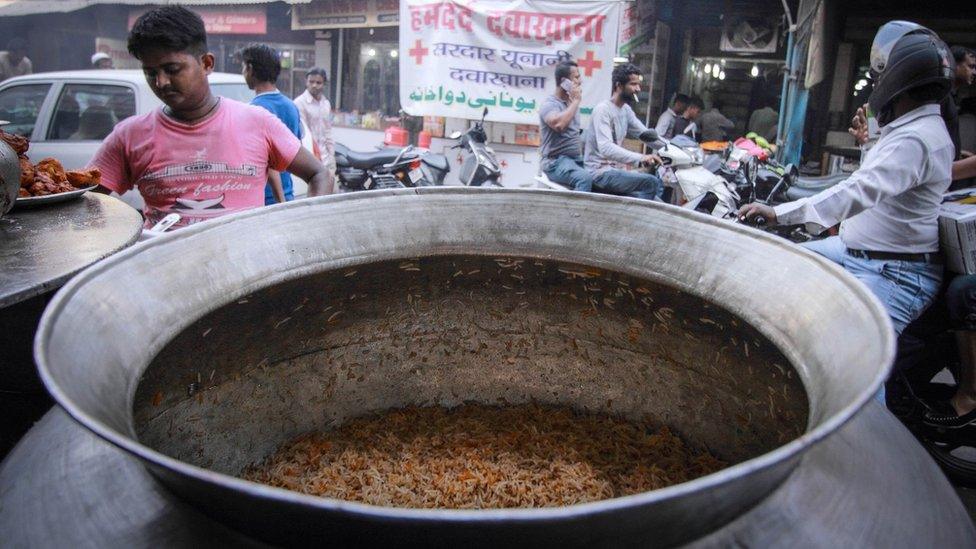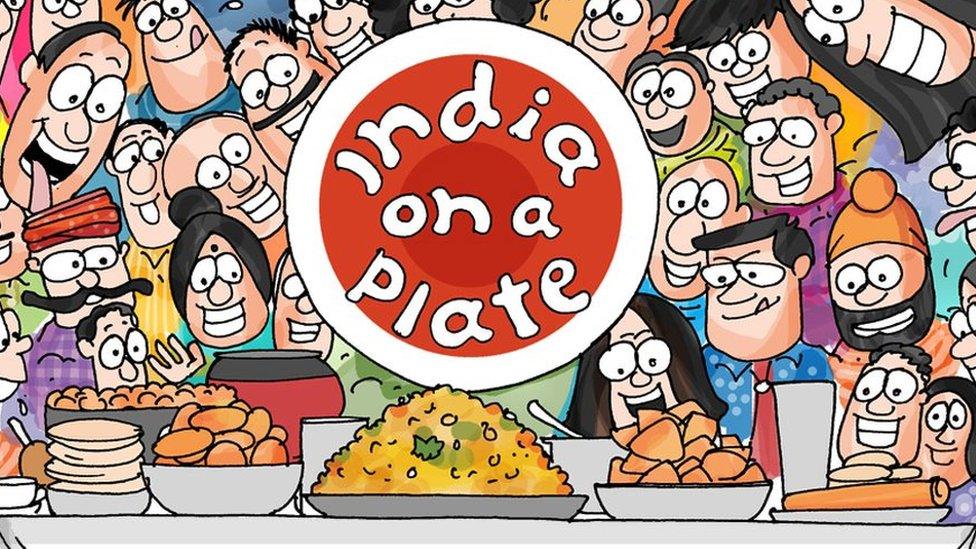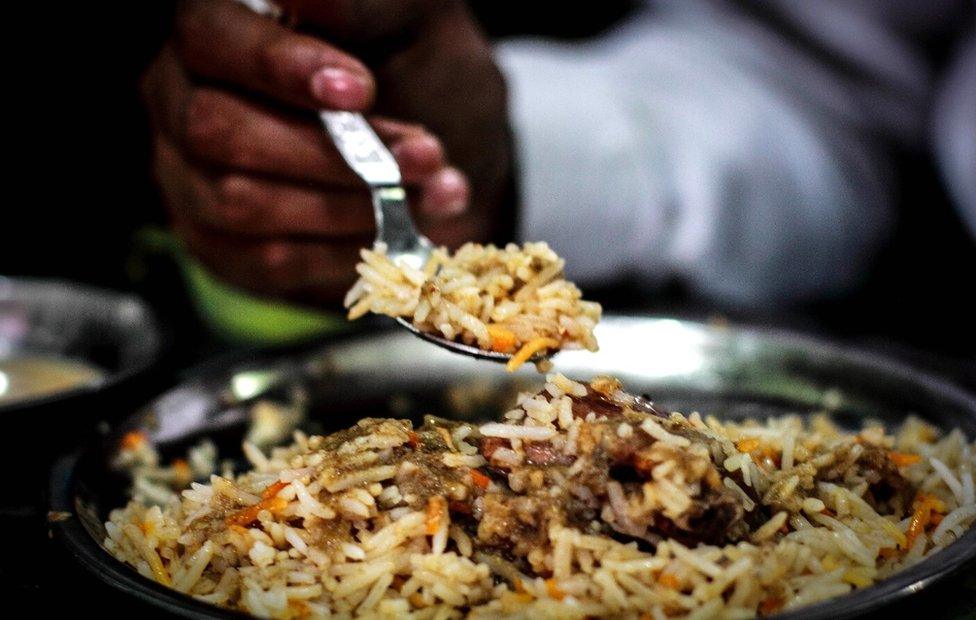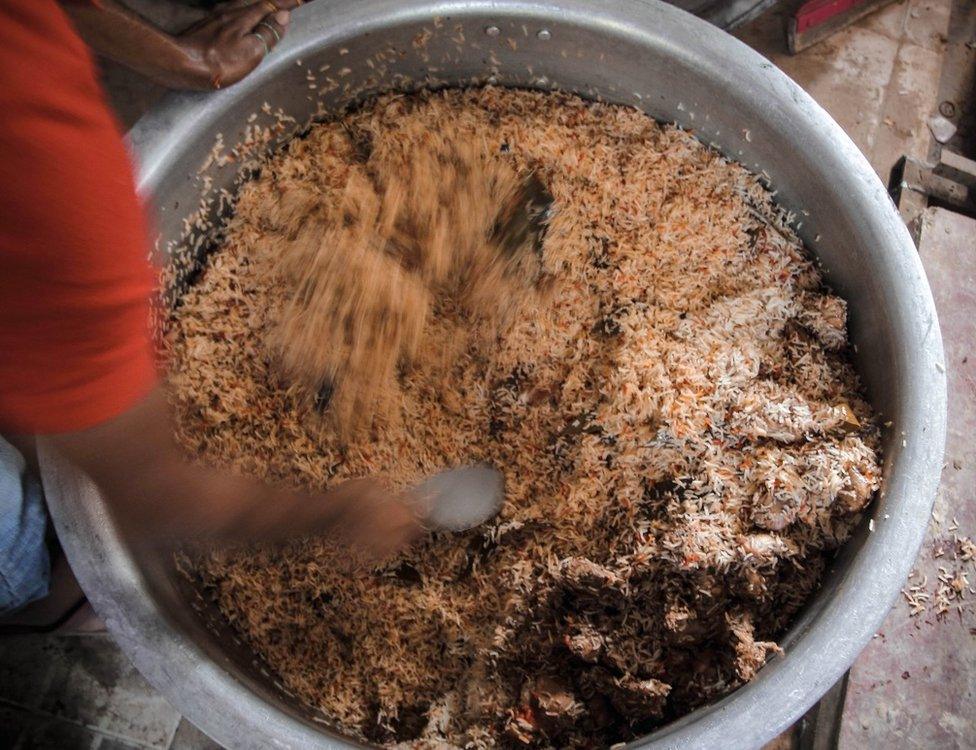From Iran to India: The journey and evolution of biriyani
- Published

Contrary to popular belief, biriyani did not originate in India
Biriyani is the quintessential celebratory dish in India and an aromatic delicacy that dazzles as a sublime one-dish meal, writes historian and food expert Pushpesh Pant.
The 400-year-old city of Hyderabad is linked in popular mind for its signature biriyani as much as it is with the exquisitely constructed Charminar monument.
The biriyani may have become a local landmark, but that doesn't stop people from asking, "Where did it come to India from and when?"
The lazy "scholars" are quick to opine that it was the genius of Indian people who transformed the "Cinderella of Central Asian pilaff" into the sparkling biriyani, but it is difficult to buy this "thesis".
A pulav (as pilaff is called in India) is a pulav - call it by any name - and a biriyani is a biriyani - belonging to a very different species.


This is the eleventh article in a BBC series India on a plate, on the diversity and vibrancy of Indian food. Other stories in the series:
Why this state screams for ice cream
The street food that silences even the most heated debate
How home chefs are helping uncover India's food secrets

There can be little doubt that biriyani originated in Iran. Even the name biriyani can be traced to the original Persian "birinj biriyan" - literally, fried rice.
In Iran, the deg (pot) is put on dum (slow cooking to allow the marinated meat to cook in its own juices and perfectly with layered rice and aromatic substances), and the rice is gently fried.
The doyenne of Islamic cooking in India, Salma Hussein, tells us however that the biriyani sold on the streets in contemporary Iran no longer contains rice and has evolved into succulent chunks of meat cooked in an envelope of rumali roti (paper thin bread).

Biriyani is an extremely popular street food in India
But the dish has also evolved in India, where it has a colourful and varied history.
There is no evidence that biriyani first came to this land with the Moguls. It is far more probable that it travelled with pilgrims and soldier-statesmen of noble descent to the Deccan region in south India.
It was only much later that the dish meandered along less travelled roads, along the seaboard and the hinterland of the peninsula, donning different local garbs to tickle regional palates.

Different parts of India serve different variations of biriyani
In present day Kerala for instance, one encounters the Malabar/Mopla biriyani. At times it substitutes meat and chicken in favour of fish or prawn. The spicing is stronger here and its proponents do not miss the aromatic symphony associated with the Hyderabadi product.
In far off West Bengal, the Dhakai version of the dish from the Bangladeshi capital is no less seductive. It is not unreasonable to suggest that the biriyani could have traversed the sea route to reach this port city, which was once ruled by nawabs (Mughal princes).
And along the west coast, the milder Bohri biriyani has many die hard patrons.

Most people do not know the real biriyani
A far more robust biriyani - flavourful and satisfying - continues to be cooked in [the central city of] Bhopal where another strain may have come with the Durrani Afghans who once wore the colours of Ahmed Shah Abdali's, external army.
Then there is the Moradabadi biriyani (made in Moradabad city in the northern state of Uttar Pradesh) that has suddenly (re)surfaced in the capital, Delhi.
And the best example of the "Rajasthani improvisation on the biriyani theme" is arguably the deg prepared for the devout pilgrims at Garib Nawaz ki Dargah at the popular Ajmer Sharif Sufi shrine.

Biriyani has evolved in the land of its birth, as it has in India
Unfortunately though, people remain unacquainted with the real McCoy.
The fare dished out at most eateries can be best described as "frying pan biriyani".
Here rice may be long grained and a hint of saffron may tint it yellow, but this concoction is not even a distant cousin of true blue biriyani.
Even posh hotels and fine dining restaurants don't bother cooking it from scratch. They have instead, developed the fine art of "assembling" the dum ki biriyani.